Jonathan Erdman
A weather pattern change in the West is bringing much-needed rain and mountain snow, but it could be too much of a good thing for parts of California by midweek.
SPONSORED: Epic winter clearance sale at Sierra Trading Post
A sharp, southward plunge of the jet stream has developed along the West Coast, in response to a warm dome of high pressure aloft poking north toward Alaska's Aleutian Islands.
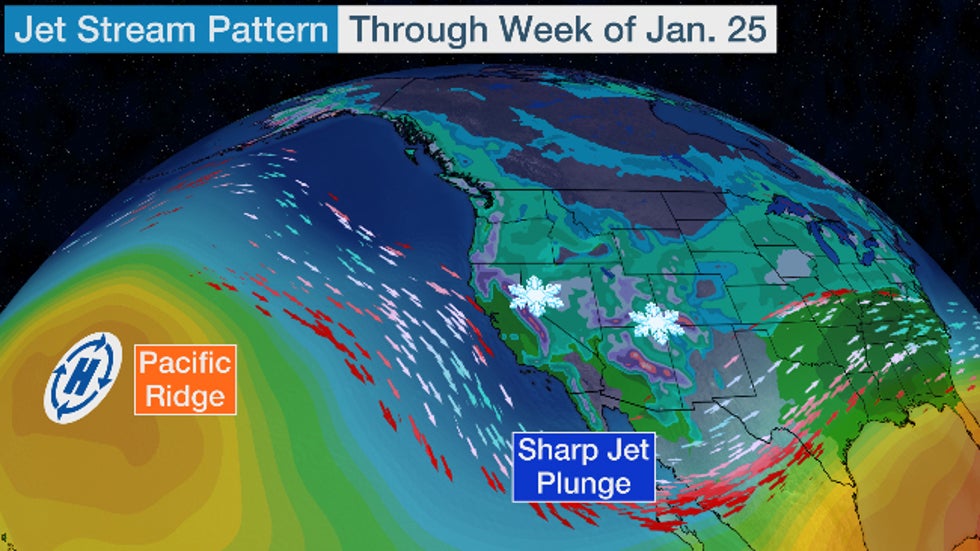
This U-shaped jet stream trough may hold for a while and will guide a series of Pacific frontal systems into the West Coast over the next week or so.
A system will spread across California into the Southwest through Tuesday. Rain will be mostly light in the lower elevations as snowfall piles up from the Sierra Nevada and the mountains of Southern California into the Four Corners.
Snow levels will be very low given the cold origin of this early-week system. That means travel could be impacted in Southern California passes like Interstate 5 through the Grapevine, Interstate 15 through Cajon Pass and Interstate 8 between Viejas and Boulevard. Gusty winds are also expected.
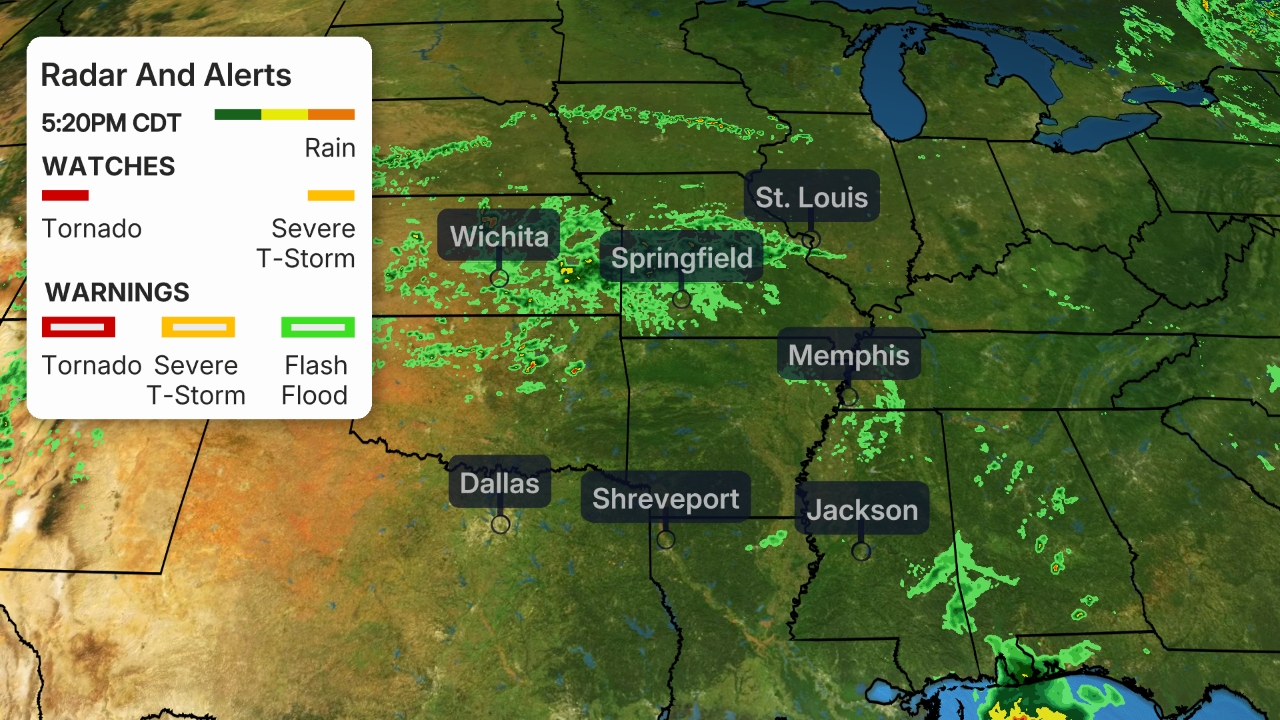 Current Radar
Current RadarA wetter storm will approach California by late Tuesday into Wednesday and could linger into late week. This system is likely to tap into a strong and deep plume of moisture known as an atmospheric river, which means it could produce more hazardous amounts of rain and mountain snow.
The heaviest rain from this storm may focus on west-central California, including from the Santa Cruz mountains into parts of the Bay Area as well as areas farther south toward Santa Luis Obispo County. Debris flows and flooding could occur in this area, especially in recent burn areas.
Rainfall totals this week could top 5 inches in some of the areas mentioned above, particularly in elevated terrain. Many other lower elevation locations in Northern and Central California might see 3 or more inches of rain.
Some of this heavy rain threat might eventually push southward into Southern California by late week, but details are uncertain.
Meanwhile, this drenching system will allow feet of snow to pile up in the Sierra Nevada. This may elevate avalanche and travel concerns.
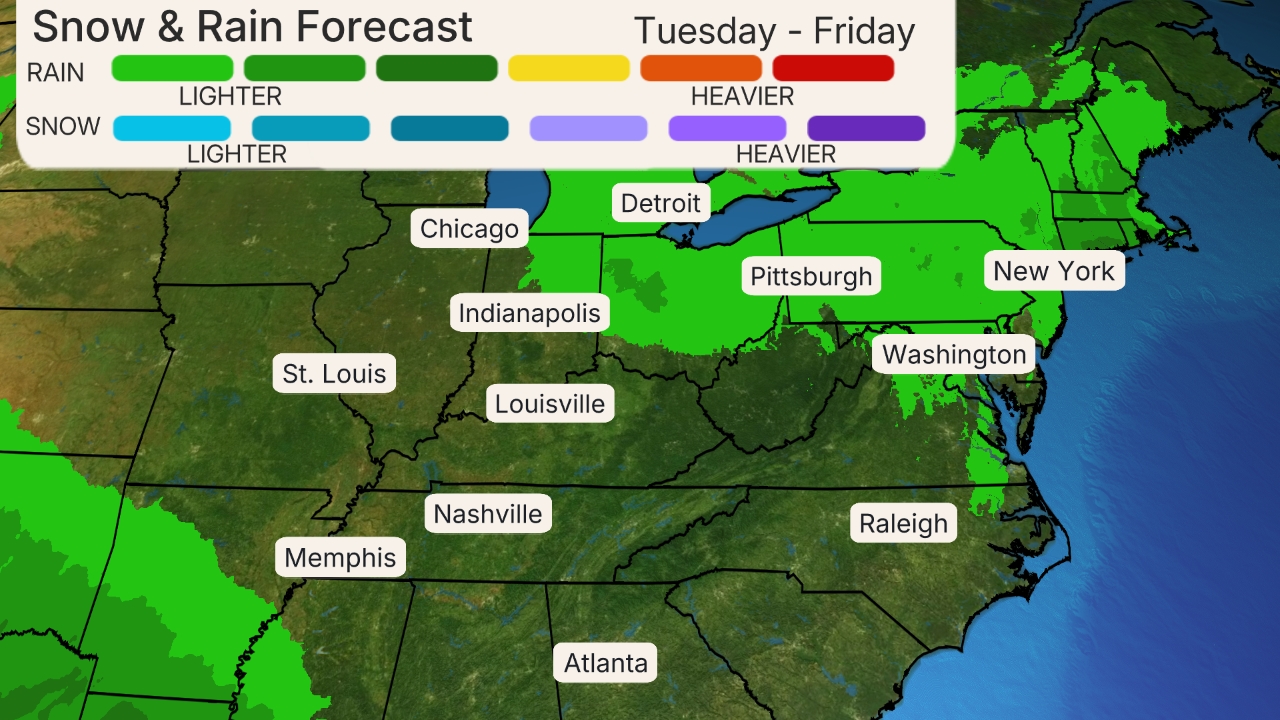
How to Fight a Drought
Drought is currently widespread through much of the West.
According to the most recent Drought Monitor analysis, a large part of the Southwest, extending into Oregon and California, is in extreme or exceptional drought, the two highest categories.
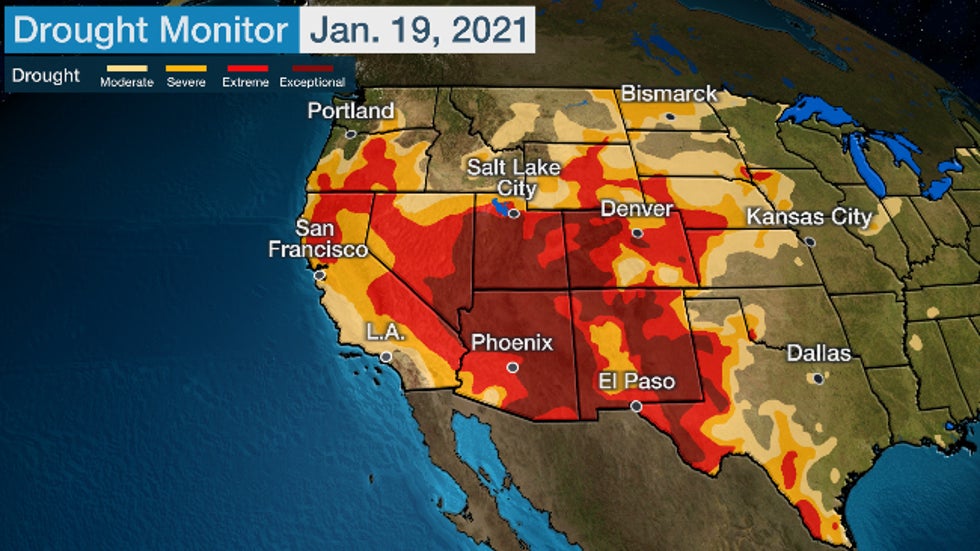 Drought Monitor analysis as of Jan. 19, 2021. Areas in the darkest shading are in the highest level of drought – "exceptional."
Drought Monitor analysis as of Jan. 19, 2021. Areas in the darkest shading are in the highest level of drought – "exceptional."The lack of rain during the summer wet phase of the monsoon contributed to the severity of the Desert Southwest drought.
But winter precipitation has also been underwhelming in the drought area.
Through Jan. 20, it's been the second-driest start to winter (since Dec. 1) on record in Salt Lake City with less than a half-inch total precipitation, and the sixth-driest start in San Francisco (SFO Airport).
Mountain snowpack, critical for water supply in parts of the West when it melts in spring and replenishes rivers and reservoirs, has suffered.
According to the USDA's National Resources Conservation Service, the Western snowpack is far below average for this time of year in much of the West, except for the Washington Cascades, Montana, northern Idaho and parts of northwest Wyoming.
In California, the snow water equivalent, a proxy measure for snowpack, is only 40% of average for this time of year, according to the California Department of Water Resources.
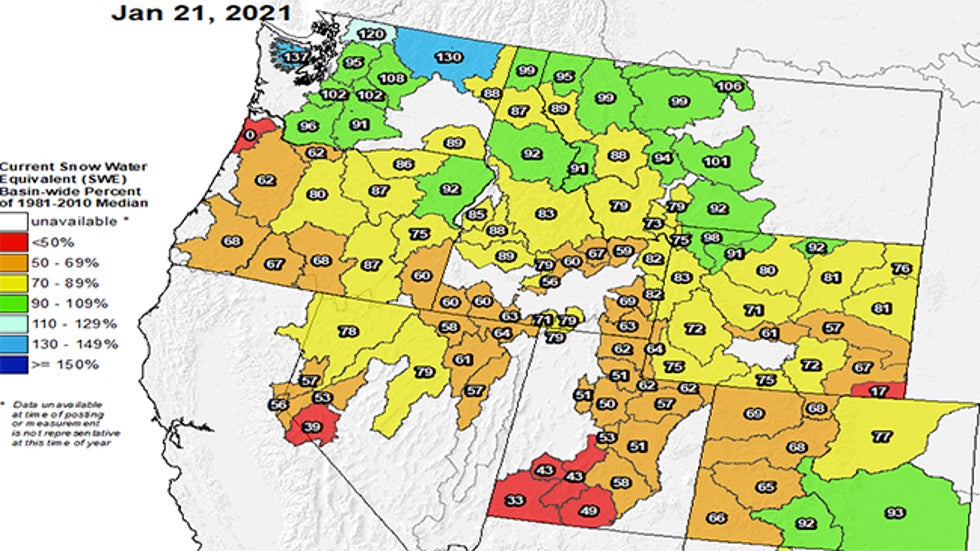 Snowpack percent of average, as measured by snow water equivalent, on Jan. 21, 2021. Much of the Western snowpack was well below average for late January.
Snowpack percent of average, as measured by snow water equivalent, on Jan. 21, 2021. Much of the Western snowpack was well below average for late January.While a couple of reservoirs are near average levels in central California, most major reservoirs in the state are notably lower than their average for this time of year.
So this wetter pattern in the West is good news, but could also be hazardous at times.
The Weather Company’s primary journalistic mission is to report on breaking weather news, the environment and the importance of science to our lives. This story does not necessarily represent the position of our parent company, IBM.
The Weather Company’s primary journalistic mission is to report on breaking weather news, the environment and the importance of science to our lives. This story does not necessarily represent the position of our parent company, IBM.

No comments:
Post a Comment